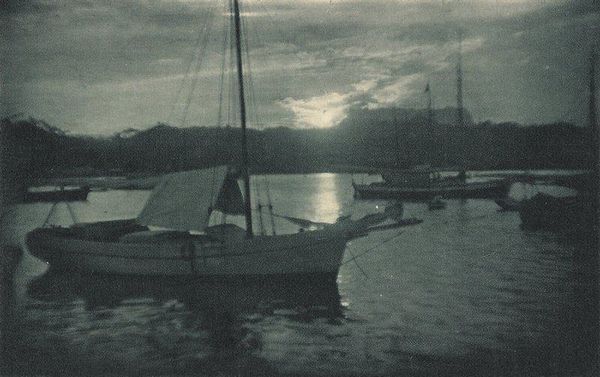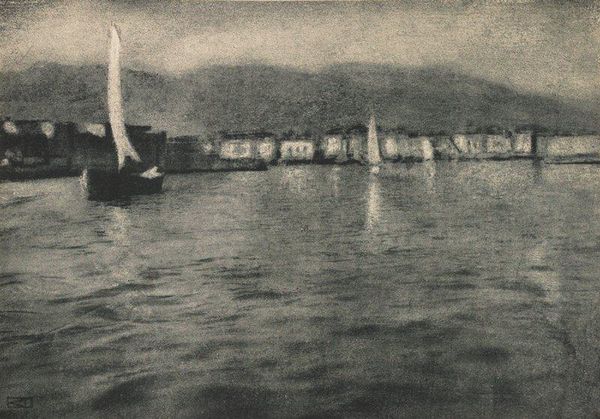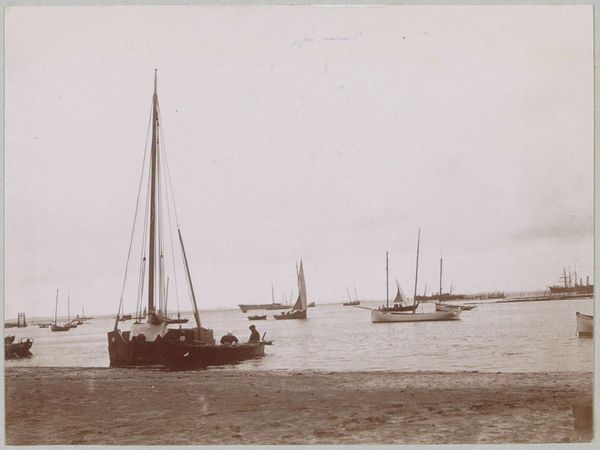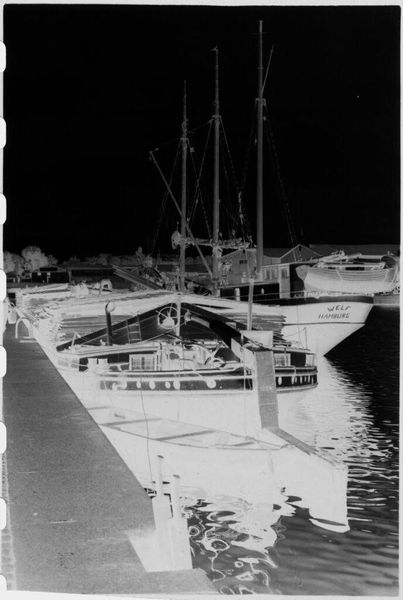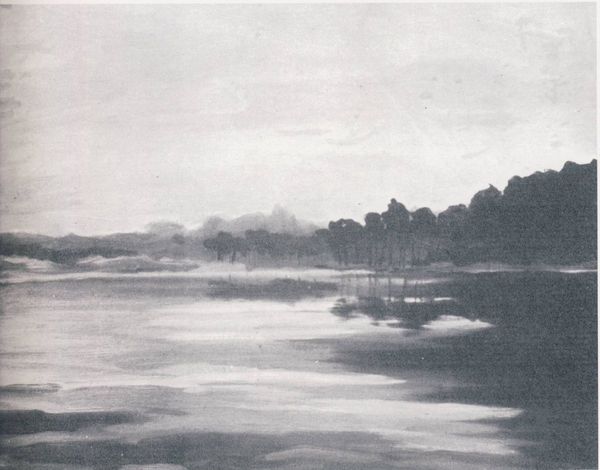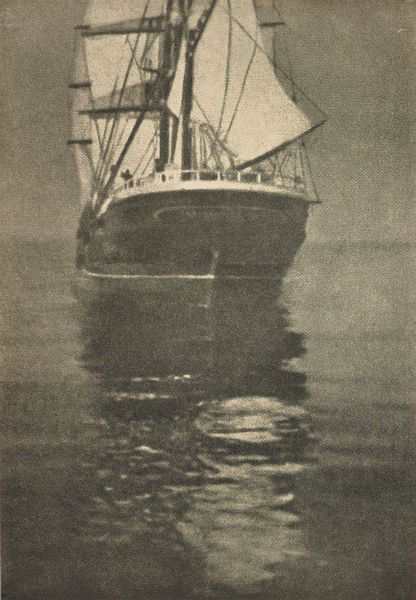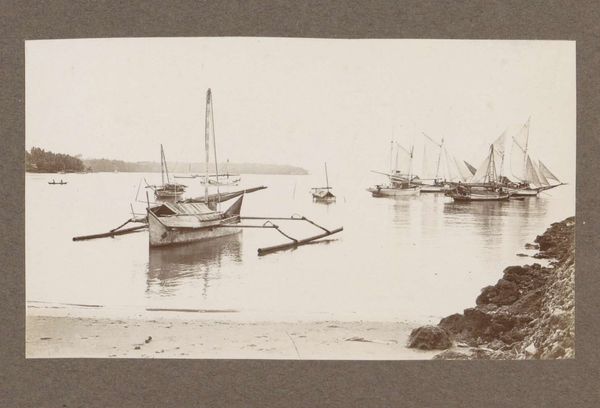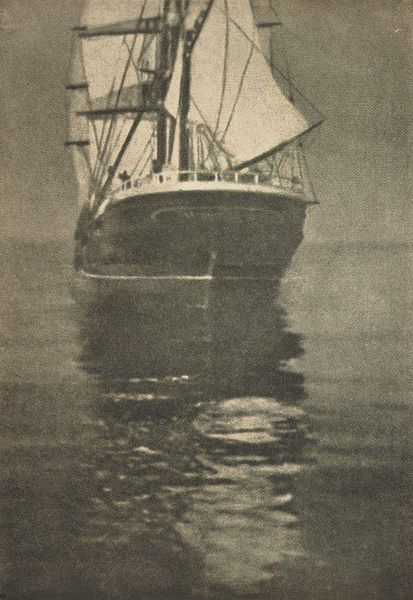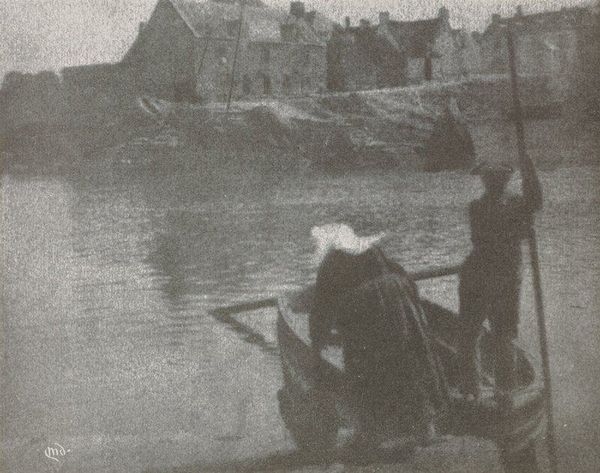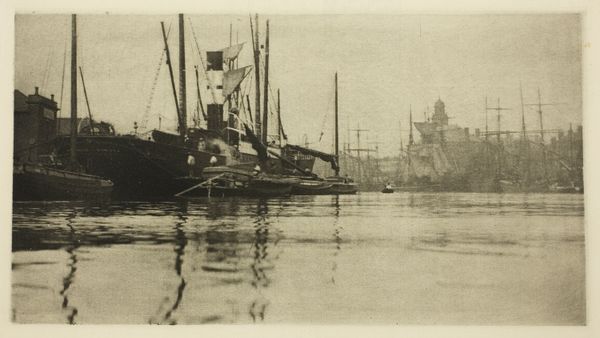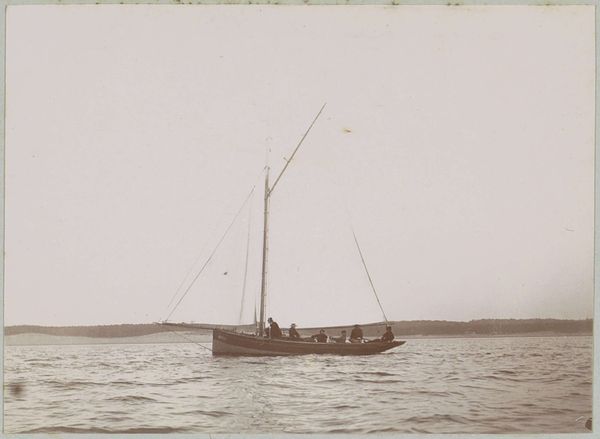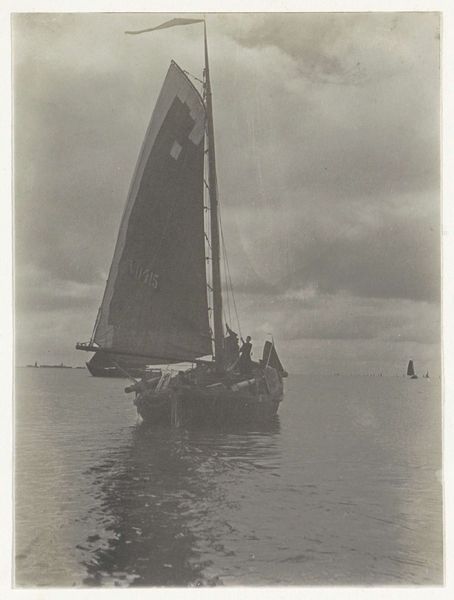
photography, gelatin-silver-print
#
monochromatic
#
black and white photography
#
pictorialism
#
landscape
#
photography
#
gelatin-silver-print
#
monochrome photography
#
monochrome
#
monochrome
Dimensions: 4 3/8 x 7 3/8 in. (11.11 x 18.73 cm) (image)
Copyright: No Copyright - United States
Curator: This photograph, a gelatin-silver print called "The Last Hour", was created in the late 19th or early 20th century by Joseph T. Keiley. Editor: It's a striking image. Melancholic, almost… the grainy texture and somber tones give it such a contemplative feel. You can almost smell the salt water and damp wood of those boats. Curator: That sense of atmosphere is quite deliberate. Keiley was a prominent figure in the Pictorialist movement, which sought to elevate photography to the status of fine art. They often manipulated their prints to resemble paintings or etchings, emphasizing subjective expression over objective documentation. Editor: I’m particularly interested in the materiality of gelatin silver prints. This process offered Keiley a distinctive range of tonal control and allowed for a physical manipulation of the image, imbuing it with that handmade quality, a challenge to industrial photographic reproduction. Curator: Absolutely. Keiley, along with Alfred Stieglitz and others, actively promoted photography as a legitimate art form through exhibitions and publications. They challenged the prevailing academic hierarchies that relegated photography to a purely technical or documentary role. "The Last Hour", in its evocative depiction of the landscape, embodies this aspiration. Editor: It really invites you to consider the labor and choices embedded in its creation, it also subtly directs you to question, ‘who is afforded this scene of leisure, of tranquil contemplation, at the turn of the century’. And the scale too—I’m curious, how does its physical size shape its impact on the viewer? Curator: Good point. The photograph’s physical presence, how it was framed and displayed, undoubtedly influenced its reception within the artistic circles of the time and still contributes to its dialogue today. It all contributed to the campaign for photography's cultural value. Editor: Considering both its process and the politics surrounding its reception changes my understanding completely. It shifts it from simply appreciating aesthetic skill to being consciously aware of what the image has been working for, both in production and reception. Curator: Precisely. And that deeper engagement, examining art's relationship to society, is ultimately what makes the work so compelling and lasting. Editor: Absolutely. Next time I might consider photography through a more sociological lens, challenging established hierarchies is one effective mode of resistance.
Comments
No comments
Be the first to comment and join the conversation on the ultimate creative platform.
